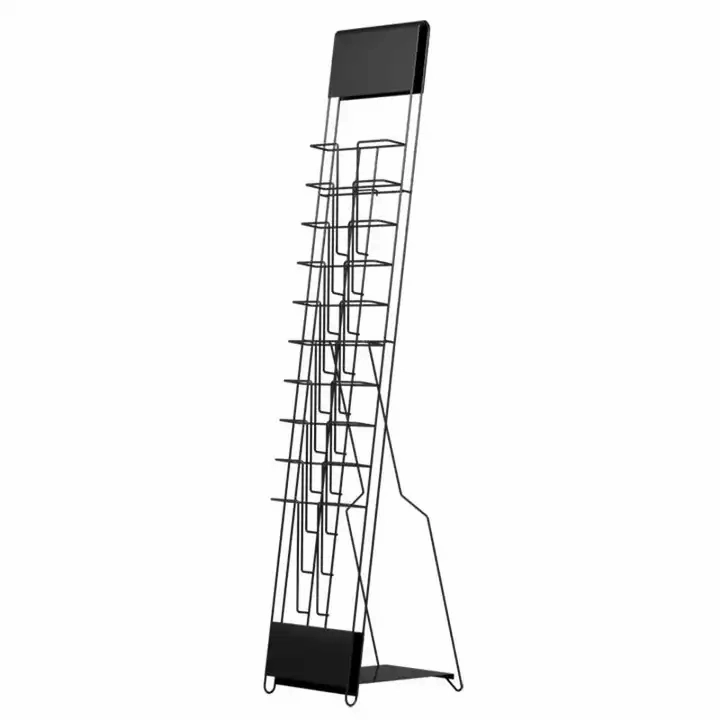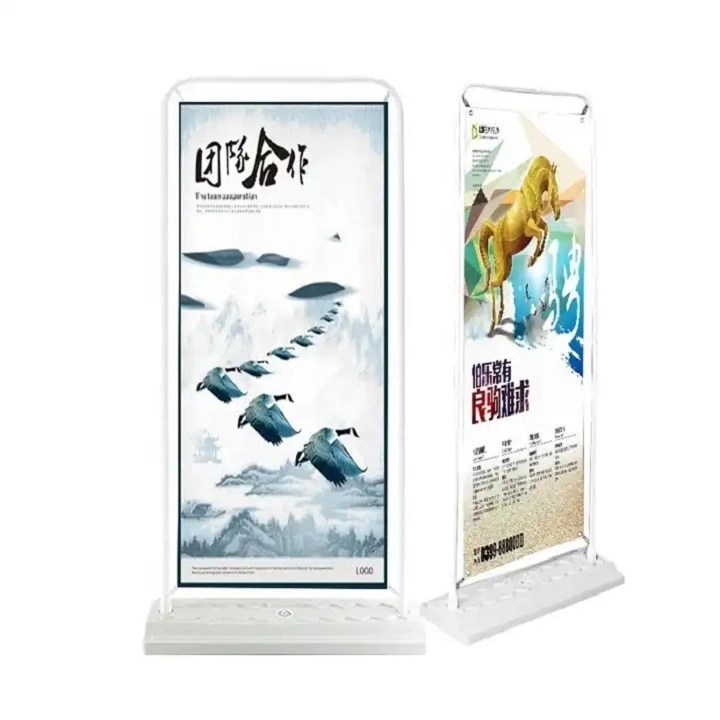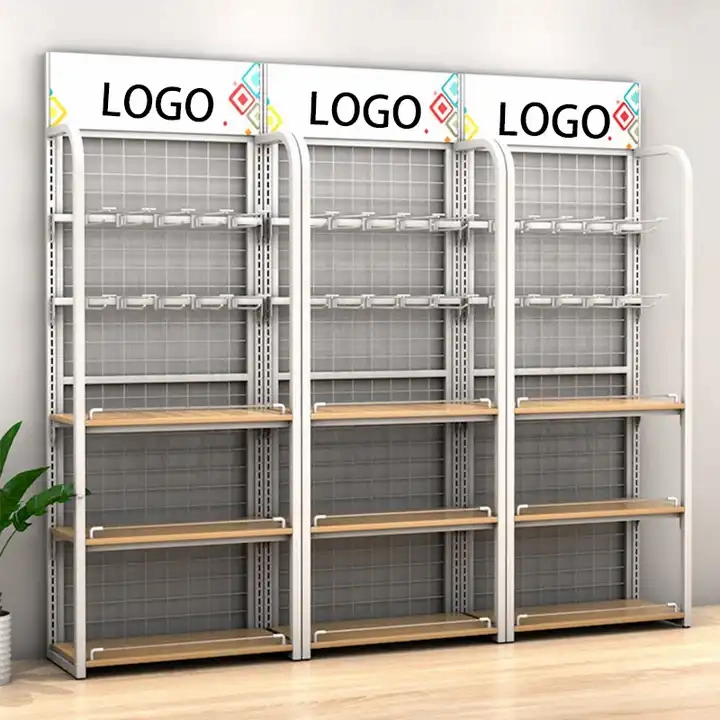Content Menu
● What Are Display Stands?
>> Common Types of Display Stands
>> Design and Material Considerations for Display Stands
● What Are Countertop Displays?
>> Common Types of Countertop Displays
>> Design and Practicality of Countertop Displays
● Key Differences Between Display Stands and Countertop Displays
>> Strategic Placement and Customer Engagement
>> Visual Appeal and Customization
● Advantages of Display Stands
>> Increased Visibility and Brand Presence
>> Versatile Usage and Deployment
>> Capacity for Larger or Multi-Line Exhibitions
>> Opportunity for Interactive Experiences
● Advantages of Countertop Displays
>> Maximizing Underutilized Counter Space
>> Driving Impulse Purchases
>> Simplified Restocking and Maintenance
>> Enhanced Customer Convenience
● Use Cases: When to Choose Each Display Option
>> Display Stands Are Ideal for:
>> Countertop Displays Are Ideal for:
● Factors to Consider When Choosing Between Display Stands and Countertop Displays
>> Product Attributes
>> Store Layout and Customer Behavior
>> Marketing Message and Branding Needs
>> Budget and Return on Investment
● Enhancing Display Effectiveness Through Customization
● Maintenance, Durability, and Sustainability Considerations
● Integrating Digital and Interactive Elements
● Real-Life Examples of Effective Use
>> Cosmetics Brand Expansion
>> Food Retailer Product Launch
● Conclusion
● Frequently Asked Questions (FAQ)
>> 1. What types of products benefit most from display stands?
>> 2. Are countertop displays only suitable for small stores?
>> 3. Can display stands be reused for different product campaigns?
>> 4. How customizable are display stands for branding purposes?
>> 5. Do display stands and countertop displays require professional assembly?
Choosing the ideal product presentation solution can be the difference between catching a customer's attention and getting lost in the retail crowd. As global competition tightens, creating a visually engaging environment is essential. Display stands and countertop displays are two primary merchandising tools, each suited for different needs and environments. Understanding the strengths and applications of each can help your business maximize visibility, encourage sales, and enhance your brand's impact.
Whether you operate a boutique, a large supermarket, or manage product rollouts for international brands and wholesalers, the right display can uplift your in-store marketing strategy. This article explores display stands and countertop displays in detail—highlighting their features, design options, advantages, and ideal use-cases. You'll also find guidance on matching your display choice to your store's needs, learn from real-world scenarios, and discover answers to frequent questions.

What Are Display Stands?
Display stands are free-standing fixtures designed to showcase products, promotional materials, or samples in high-traffic retail areas. They come in a variety of shapes and sizes, from tall floor stands to modular shelving units. Display stands can be crafted using materials like cardboard, plastic, metal, or wood, and are often custom-branded to align with your company image.
Common Types of Display Stands
- Floorstanding Displays: Full-sized units, ideal for featuring bulkier items or larger product collections.
- POP (Point-of-Purchase) Stands: Located near the checkout, these stands often encourage impulse purchases.
- Modular Stands: Flexible designs that can be resized or reconfigured for changing product lines.
- Rolling Stands: Equipped with wheels for easy movement and store layout changes.
Design and Material Considerations for Display Stands
The materials and design choices not only determine the aesthetic appeal but also the functionality and durability of display stands. Cardboard stands offer cost-effective, lightweight options perfect for short-term promotions or seasonal campaigns. Plastic and acrylic solutions lend a polished, modern look with better durability, ideal for longer-term use or premium brands. Metal and wood stands provide robustness and a high-end feel, making them suitable for flagship or permanent product placements. Moreover, incorporating vibrant colors and high-resolution printed graphics ensures the display stand captures attention instantly. Additional features like integrated lighting or digital screens can further elevate impact, engaging customers on multiple sensory levels.
What Are Countertop Displays?
Countertop displays are smaller units, designed to sit atop counters, cash registers, or display tables. These displays are perfect for highlighting small, high-margin items such as cosmetics, stationery, snacks, or seasonal products. Countertop displays help maximize underutilized space near the point-of-sale and are typically made from sturdy materials like acrylic, cardboard, or injection-molded plastic.
Common Types of Countertop Displays
- Gravity Feed Bins: Dispense individual items like candy or packaged snacks.
- Tiered Trays: Present several products on multiple ascending levels.
- Spinner Racks: Rotating stands that can be turned to view more products.
- Literature Holders: For pamphlets, leaflets, or compact product information.
Design and Practicality of Countertop Displays
Countertop displays offer a balance between visibility and space optimization. Materials like clear acrylic allow customers to easily view products from multiple angles, increasing purchase intent. Compact yet sturdy designs prevent clutter behind the counter while maintaining easy access for both customers and staff. Because these displays are positioned at eye level or just below, they leverage natural buyer behavior by catching the shopper's attention during checkout. They are especially useful in high-traffic environments where customers spend minimal time browsing but are likely to make impulse buys. Their size and placement make them highly adaptable, with options to include product samples, small giveaways, or distinct packaging variations to encourage trial and repeat sales.

Key Differences Between Display Stands and Countertop Displays
The fundamental differences between display stands and countertop displays come down to size, placement, product capacity, and marketing intent. Display stands are larger and more versatile in terms of positioning, drawing eyes across store floors, while countertop displays capitalize on convenient points of sale to trigger impulse purchases. Because of this, the two types often serve complementary roles in a well-rounded merchandising strategy.
Strategic Placement and Customer Engagement
Display stands often occupy prime positions like store entrances, aisle ends, or open floor areas, creating focal points that invite browsing and exploration. They also serve well for brand storytelling, offering ample space for graphics, product info, and multimedia elements. In contrast, countertop displays leverage smaller, often overlooked spaces such as register counters or customer service desks. Here, their purpose is less about browsing and more about quick decision-making and convenience purchase; they reduce friction by providing easy product access right when customers are ready to pay.
Visual Appeal and Customization
Customization plays a pivotal role in maximizing the effectiveness of both display types. Display stands can be molded into custom shapes mimicking product forms or themes, while countertop displays often incorporate clever designs like rotating wheels, easy-open trays, or slide-out drawers. Branding elements such as color matching, logos, taglines, and engaging images transform ordinary fixtures into powerful marketing tools that reinforce brand identity and support sales objectives.
Advantages of Display Stands
Increased Visibility and Brand Presence
Display stands dominate the retail landscape through their height and scale. They naturally attract attention from across aisles and store entrances, making them ideal for launching new products or promoting limited-time offers.
Versatile Usage and Deployment
From pop-up stores to permanent fixture spaces, display stands can be adapted to serve various retail concepts. Their modular nature allows retailers to refresh designs quickly, accommodate seasonal changes, or reconfigure layouts for special events.
Capacity for Larger or Multi-Line Exhibitions
Display stands allow brands to showcase full product assortments, bundle deals, or gift collections in one spot. Their large surface area can support heavy products and multiple SKUs without appearing cluttered.
Opportunity for Interactive Experiences
Floor display stands can integrate digital elements such as touchscreens, audio players, or augmented reality panels, deepening customer interaction and enhancing memorability.
Advantages of Countertop Displays
Maximizing Underutilized Counter Space
Countertop displays transform often-neglected flat surfaces into prime selling zones, generating additional revenue without requiring extra floor space.
Driving Impulse Purchases
Strategically placed personal care items, confectionery, or travel-sized goods exploit the natural pause customers make during checkout, converting small moments into profitable transactions.
Simplified Restocking and Maintenance
Due to their compact size and accessible position, countertop displays streamline inventory replenishment, reducing labor time and ensuring constant product availability.
Enhanced Customer Convenience
Countertop displays facilitate easy item grab-and-go, catering to busy shoppers who prize speed and accessibility.
Use Cases: When to Choose Each Display Option
Display Stands Are Ideal for:
- Spotlighting flagship products or new releases that benefit from bold presentation and storytelling.
- Retailers with ample floor space who want to create dynamic, immersive shopping experiences.
- Complex product lines requiring clear organization and differentiation.
- Seasonal or event-based campaigns that demand visually striking promotional fixtures.
Countertop Displays Are Ideal for:
- High-traffic stores and convenience shops where checkout impulse buys are significant revenue drivers.
- Small-format merchandise with high turnover rates.
- Environments with limited space but high customer throughput.
- Cross-selling opportunities near customer service or information desks.
Factors to Consider When Choosing Between Display Stands and Countertop Displays
Selecting the most effective display type requires an analysis of your specific product characteristics, retail environment, and marketing objectives.
Product Attributes
Consider size, fragility, and packaging of your products. Larger and heavier items necessitate more robust floor display stands, while compact, light goods find a natural home on countertop displays.
Store Layout and Customer Behavior
Map out traffic patterns, bottlenecks, and dwell zones to determine where customers pause and engage most. Use this insight to place display stands where shoppers will stop and explore, while countertop displays can target moments of transition like checkout.
Marketing Message and Branding Needs
Evaluate how much space and visibility your branding requires. Floor stands provide ample room for eye-catching graphics, while countertop displays demand succinct visuals for quick impact.
Budget and Return on Investment
Account for initial costs, durability, and expected campaign length. Countertop displays often require lower upfront investment and suit short-term promotions, whereas custom display stands may require greater resources but deliver extended returns.

Enhancing Display Effectiveness Through Customization
Tailored design solutions enable retailers to create memorable brand experiences that resonate with their target audience. Options include:
- Incorporating brand colors and logos to reinforce visual identity.
- Using unique shapes and cutouts aligned with product icons or themes.
- Applying high-quality printing techniques for vivid, lasting colors.
- Adding lighting accents or LED features to highlight products dynamically.
- Embedding NFC tags or QR codes to drive online engagement and create omnichannel synergy.
- Designing multifunctional displays to switch between product lines easily as inventory changes.
Maintenance, Durability, and Sustainability Considerations
Displays should not only attract and hold shopper attention but also withstand the demands of a busy retail environment. Quality materials help displays endure frequent handling, stock rotation, and cleaning.
- Durability: Opt for rugged materials if you expect heavy use or transportation between locations.
- Cleaning: Select finishes that resist smudging, dust, and moisture.
- Sustainability: Employ eco-friendly materials such as recyclable cardboard, biodegradable plastics, or sustainably sourced wood to align with corporate social responsibility goals and eco-conscious consumer values.
Integrating Digital and Interactive Elements
The retail landscape increasingly favors immersive experiences that combine physical displays with digital engagement. Adding video screens, QR codes, or interactive touchpoints converts static display stands into vibrant customer engagement hubs.
Examples of digital integration include:
- A display stand featuring a looping product demonstration video to educate and entice shoppers.
- Countertop displays with QR codes linking to product tutorials, customer reviews, or exclusive discount offers.
- Touchscreen units allowing customers to browse product variations or customize merchandise on the spot.
Real-Life Examples of Effective Use
Cosmetics Brand Expansion
An international cosmetics brand introduced sleek acrylic countertop displays at boutique registers for small, high-margin items like lip balms and travel packs. Simultaneously, they deployed large, visually striking cardboard display stands near mall entrances to showcase new product launches. This dual approach optimized product placement across different store areas, blending impulse and planned purchases.
Food Retailer Product Launch
A snack manufacturer used rugged modular floor display stands loaded with assortment packs in supermarkets. To complement this, compact countertop gravity feeders were placed in convenience stores and gas stations. This multi-channel display strategy allowed coverage of diverse retail environments from premium outlets to quick-stop shops.
Conclusion
Both display stands and countertop displays offer unique benefits that can dramatically improve product exposure and maximize retail sales when thoughtfully selected and implemented. Display stands make a bold impact in open spaces, ideal for building brand presence, launching product lines, and creating immersive experiences. Countertop displays energize small, high-traffic areas, activating impulse purchases and leveraging limited space efficiently. Your final decision should consider product size, store layout, customer behavior, branding goals, and budget constraints. Often, combining both display types in your merchandising toolkit delivers the most compelling and comprehensive retail strategy.

Frequently Asked Questions (FAQ)
1. What types of products benefit most from display stands?
Display stands are ideal for large, bulky, or flagship products that require heightened visibility. They are particularly effective for new launches, seasonal items, and multi-pack product ranges.
2. Are countertop displays only suitable for small stores?
Not at all. Countertop displays work well in stores of any size, especially where checkout locations provide opportunities for impulse buys. High-end boutiques and large supermarkets alike can leverage them.
3. Can display stands be reused for different product campaigns?
Yes, well-designed modular or sturdy display stands can be refreshed with new graphics or reconfigured to suit new product lines, making them an eco-friendly and cost-effective option.
4. How customizable are display stands for branding purposes?
Display stands can be fully customized with brand logos, colors, unique shapes, high-quality graphics, and interactive elements to create a distinctive brand presence and maximize marketing impact.
5. Do display stands and countertop displays require professional assembly?
Most countertop displays are easy to set up without specialized assistance. Larger or more intricate display stands may require basic assembly, but instructions are typically straightforward and user-friendly.

































